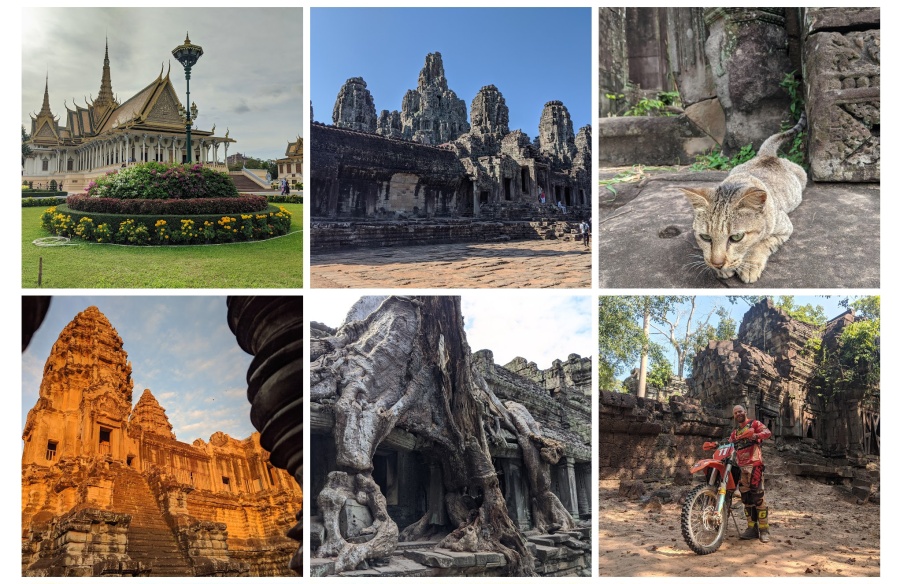
Two Weeks in Cambodia
I spent about two weeks of this December in Cambodia - let me tell you about it!
The Khmer Empire was born in the early 9th century and flourished until the 15th century. At its zenith in the 13th century, its capital, Angkor, was the largest pre-industrial urban centre in the world. Angkor today contains more than 1,000 temples, the greatest of which is Angkor Wat, the largest religious monument in the world… but more on that later.
After the fall of the Khmer Empire, Cambodia was ruled as a vassal state of its neighbours, until it became a French protectorate (at the request of the Cambodian King) in 1863. It was occupied by the Japanese in World War II, gained independence from France in 1953.
After that the situation gets very, very messy. “Following the Cambodian coup of 1970 which installed the right-wing pro-US Khmer Republic, the deposed king gave his support to his former enemies, the [Marxist-Leninist] Khmer Rouge.” (wikipedia) The Khmer Rouge committed the Cambodian Genocide, during which about 1.5 to 2 million people were killed - a quarter of Cambodia’s population.
The Khmer Rouge were finally ousted by Vietnam in 1979, putting an end to the genocide. Peace between rival factions came officially in 1991, with free elections held in 1993 with the support of the UN, though nowadays Cambodia is effectively a one-party state.
Cambodia Today
- GDP per capita is $4,322 (at Purchasing Power Parity PPP) - 148th in the world
- GDP is growing at 6.8%. This is stretching the country’s electrical grid - they experienced rolling blackouts in 2019. Energy prices are among the highest in the region.
- HDI is 0.582 - “medium” - 146th in the world
- 95% buddhist
- Hun Sen, the Prime Minister, is the longest serving non-royal leader in Southeast Asia, ruling Cambodia since 1985
I like Cambodia. The place is lively and the people are friendly, but everything also seems cleaner and quieter than The Philippines. I don’t think it’s just a function of city size - I remember even tiny Coron Town in The Philippines as terribly loud and polluted, while Siem Reap feels pleasant by comparison.
Angkor and a Thousand Temples
The biggest draw to Cambodia is Angkor Wat - the massive Hindu complex from the 12th Century that is the largest religious monument in the world. It’s so important to the country that it’s even on Cambodia’s flag!
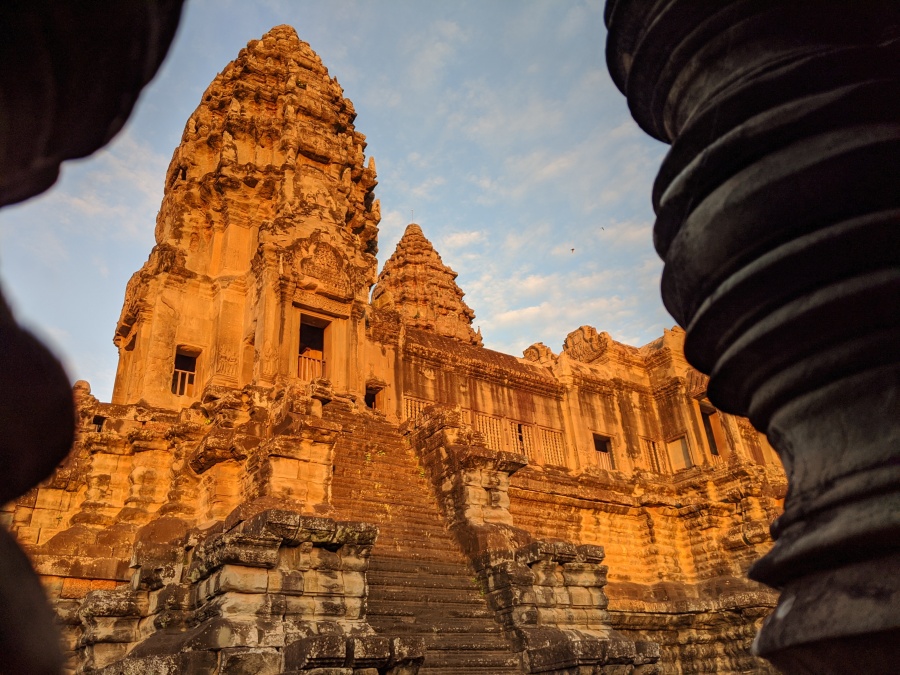
Walking around Angkor Wat is an amazing experience. I especially enjoyed going there for the sunrise - while everyone else getting the classic photo from across the lake from the west, I walked inside the temple complex from the eastern entrance. For some time I had courtyards and rooms all to myself - a magnificent experience.
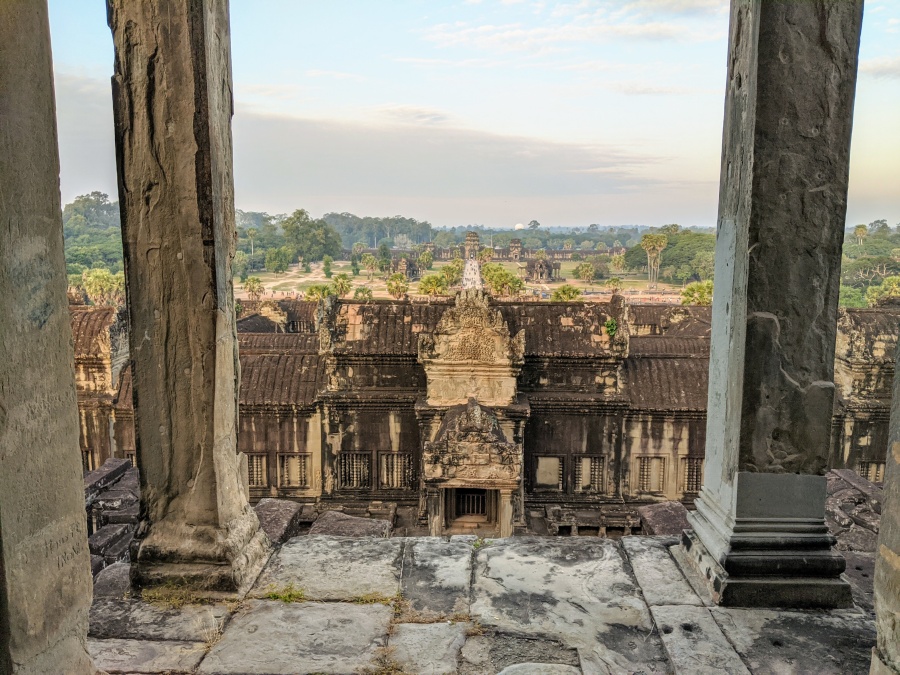
Angkor Wat is just the largest temple of Angkor, the ancient former capital of the Khmer Empire. Per wikipedia, the temples in the area “number over one thousand, ranging in scale from nondescript piles of brick rubble scattered through rice fields to the Angkor Wat.”
Here are some of my other favorites. The superbly intricate Bayon (at the center of Angkor Thum):
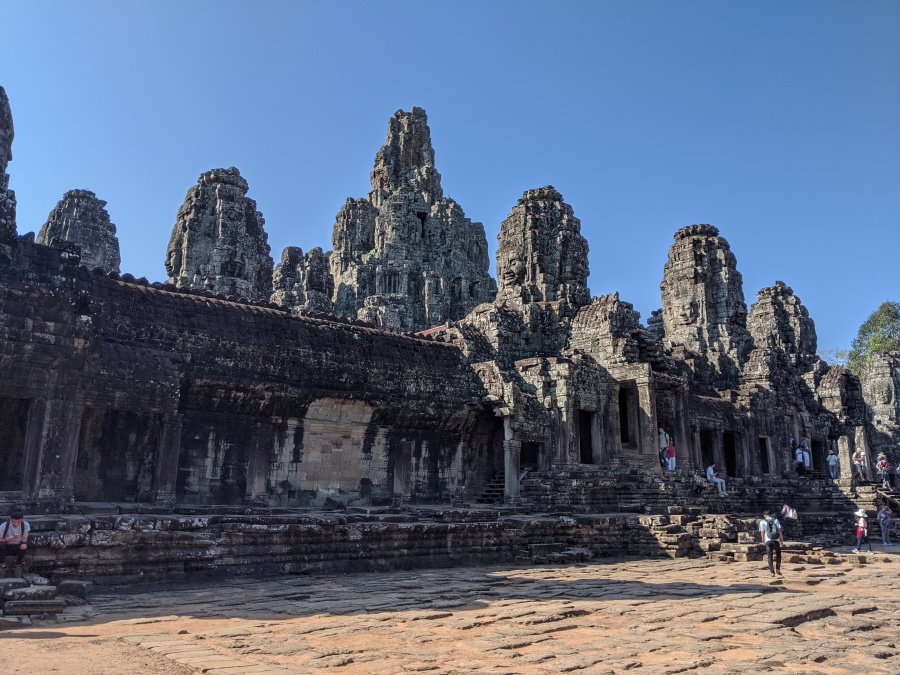
Bayon is popular and gets crowded… but the crowds seem to walk right up the stairs to the top level, completely ignoring the middle terraces and halls (the doorway is easy to miss - it almost happened to me, too). If you go, check out the middle level - you’ll be one of few people there, and the level is huge and complex, and a lot of fun to explore.
The overgrown Ta Prohm, where Lara Croft, the Tomb Raider, searched for ancient treasure:
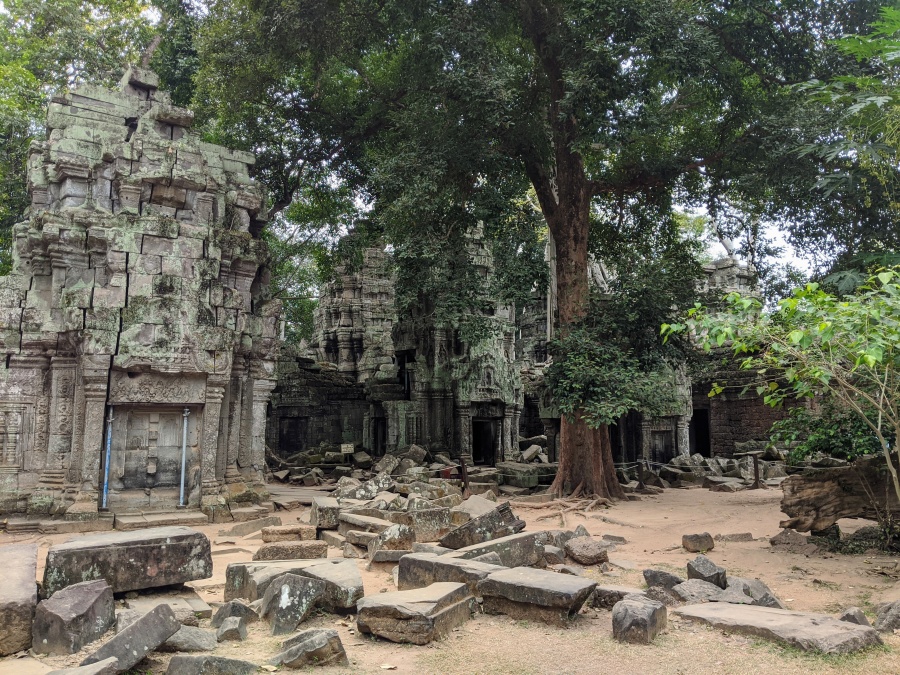
If you’re in the mood for a change of pace, here’s Lara Croft exploring the same ruins:
I also liked the vast and overgrown Preah Khan:

It’s difficult to put the experience of the vastness of Angkor into words. There are just so many temples. That’s really great - even in the middle of the day, I was able to follow some paths less traveled by and have small temple ruins all to myself, which lends the experience a magical feeling, where Indiana Jones or Lara Croft might pop out from behind a corner at any moment.
Here’s Ta Nei Temple, where I was all alone (it’s at the dead end of a dirt road - check it out if you’re looking to get away from the crowds):
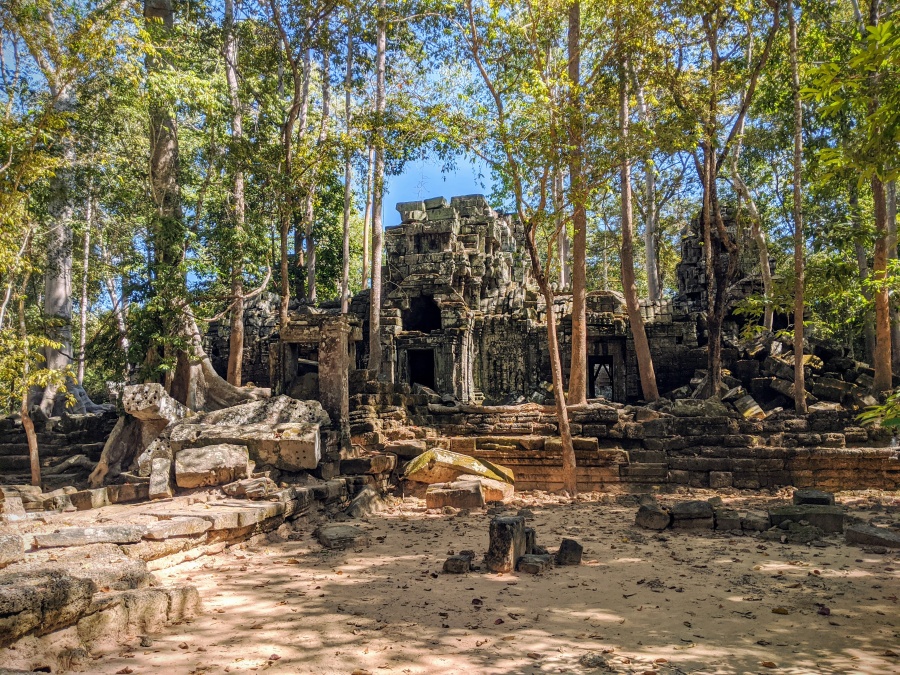
Here’s another great tip to get away from the crowds: go see the Khmoch Gate - The Gate of the Dead. You will pass through other such gates to get into Angkor Thum, but as those gates are the main entrances, there are cars and buses and many tourists. The Khmoch Gate is just as beautiful, and only accessible by dirt roads, so if you luck out you might have it all to yourself.
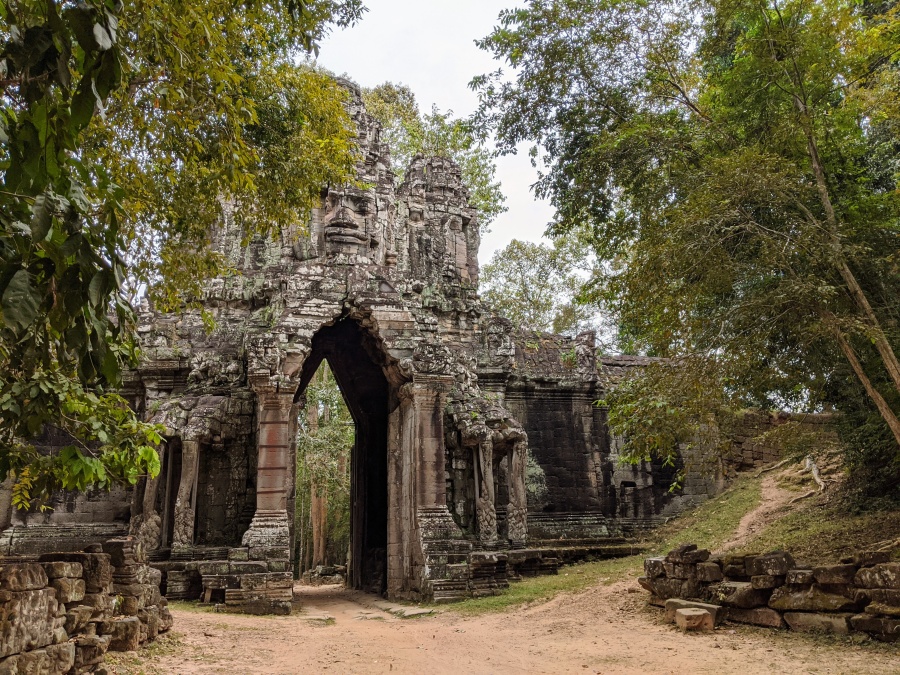
Here’s my final Pro Tip for you: get the three-day pass and spread out the temple visits over non-consecutive days. There are only so many temples you can see in a day before you get templed-out. In fact, I would wager you’re templed-out just reading this, correct?
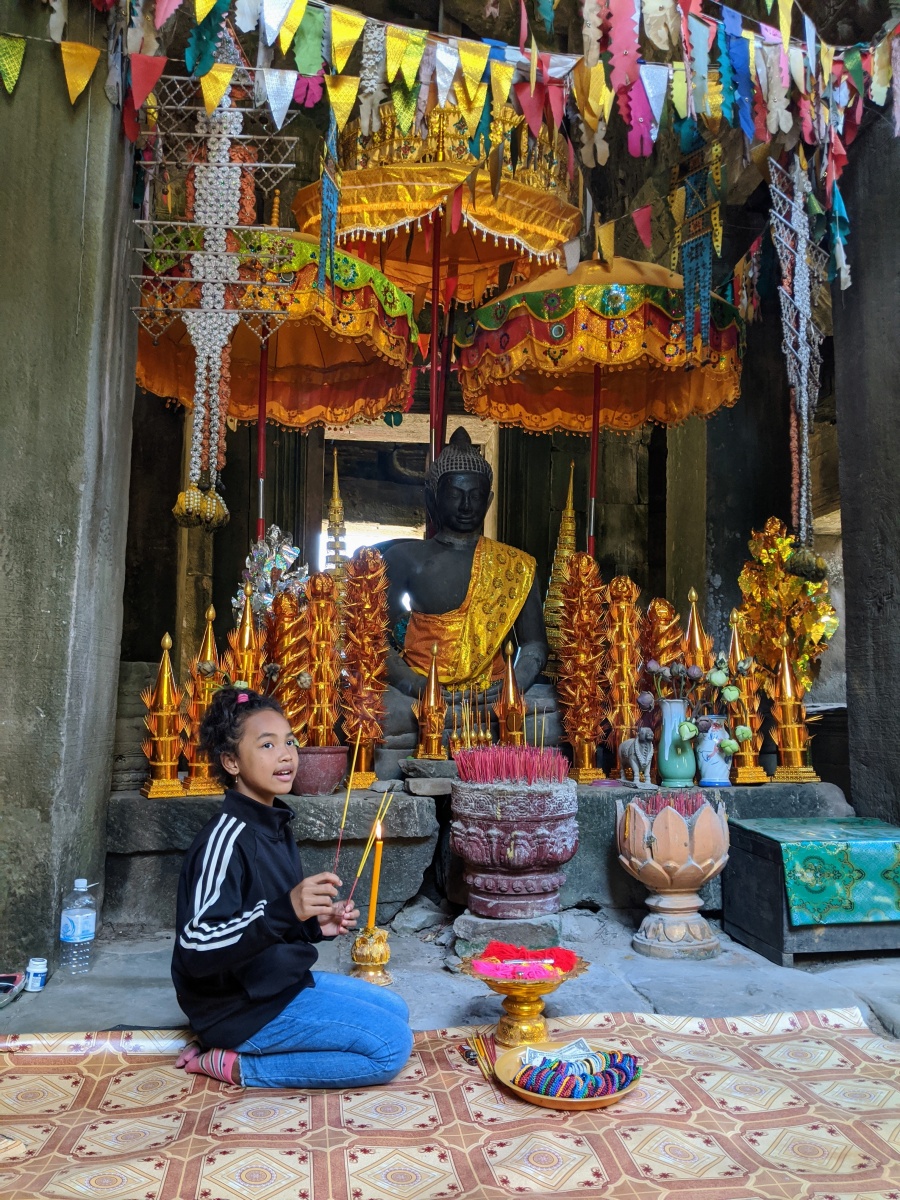
Siem Reap
Siem Reap is the modern city just to the south of Angkor.
I spent a day dirtbiking in the countryside around Siem Reap with Bot from Cambodia Trails, and had a great time. After riding for a few hours through villages, fields, and forest, we suddenly appeared at the overgrown Banteay Ampil Temple. Our guide and I, and two locals lieing in hammocks and chatting, were the only people there. After lunch we also visited the larger (though also overgrown) Prasat Beng Mealea temple. I’m not sure I could come up with a better way to get to these remote temples than via a dirtbike.
Now… let’s talk about frozen yogurt. Froyo is hard to find in most of the countries I’ve been to recently.
I found one in Siem Reap, run by the Cambodia Rural Students Trust. The organization sponsors bright students from poor, rural families, to study at the best high school and university in Siem Reap. The workers at the froyo place are all students - which provides a great opportunity to learn about their experience. I spent some time talking to two of them:
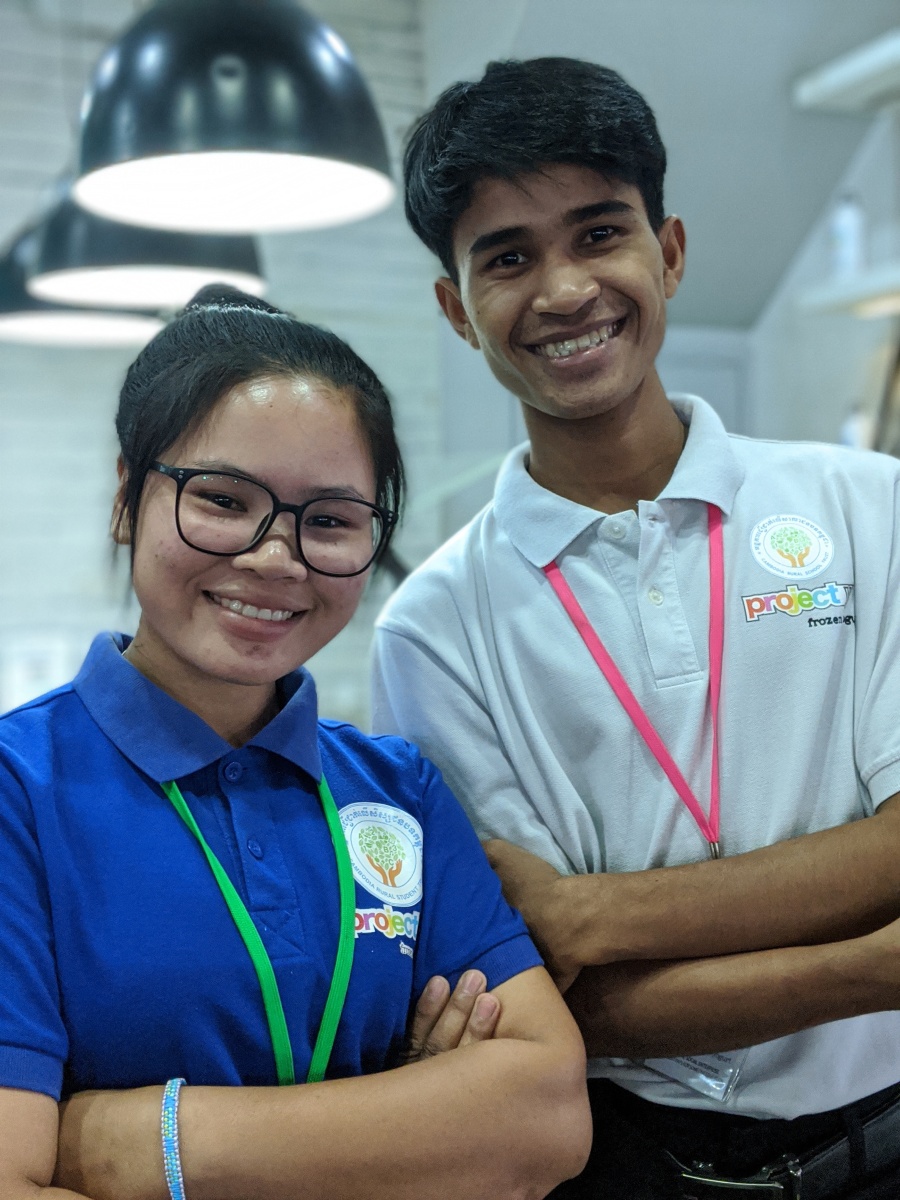
Here’s Lean’s story (Lean is on the left in the photo above), as best I remember it. Lean grew up poor on a farm. Her family had land, but due to some issues with the government couldn’t cultivate it. Her parents left to find work elsewhere when Lean was 14; she and her 10-year-old brother lived with their grandfather for the first year, and then alone when the grandfather passed away. Their neighbors help take care of them.
Lean has a complicated relationship with her parents - they only see each other once every three months or so, and they struggle to talk to each other when they do. But she says she understands that they left so that they could provide basic food and shelter for Lean and her brother, and so ultimately Lean says she is grateful to them.
Lean will finish high school this year, and wants to study international relations in college, and then go to law school. Her goal is to work for the government and to help her country. She adores Malaysia’s Minister for Sport, Syed Saddiq; she listens to his motivational speeches before going to sleep.
The froyo is tasty, too, if you’re wondering :)
Phnom Penh
My main reason to visit Phnom Penh was to learn more about the Cambodian Genocide, about which I had only passing knowledge. What I’ve learned is brutal… though I suppose that could be said about literally any genocide.
To keep it short: about 1.5 to 2 million people were killed between (1975 and 1979) - a quarter of Cambodia’s population. People were forcibly moved people out of cities - in 1972, the population of Phnom Penh was 2 million; in 1992 it was 450,000.
Bullets are expensive… so most people were literally killed by being hacked to death with gardening and household tools. Children younger than two years of age were killed - so they wouldn’t grow up with thoughts of revenge against the regime. The same logic was applied to families - if one person was executed, better kill the rest of the family, too, so they don’t think of revenge. One of the Khmer Rouge’s mottos was that “it is better to wrongly kill an innocent person than to wrongly let an enemy live”. The results reflect the motto.
I visited the Choeung Ek Genocidal Center, aka the Killing Fields, in Phnom Penh. It was an intense experience, and some few words that I could write here wouldn’t do it justice, and some things are so brutal that I honestly don’t feel like writing about them. Sorry. Please visit the center if you are ever in Phnom Penh.
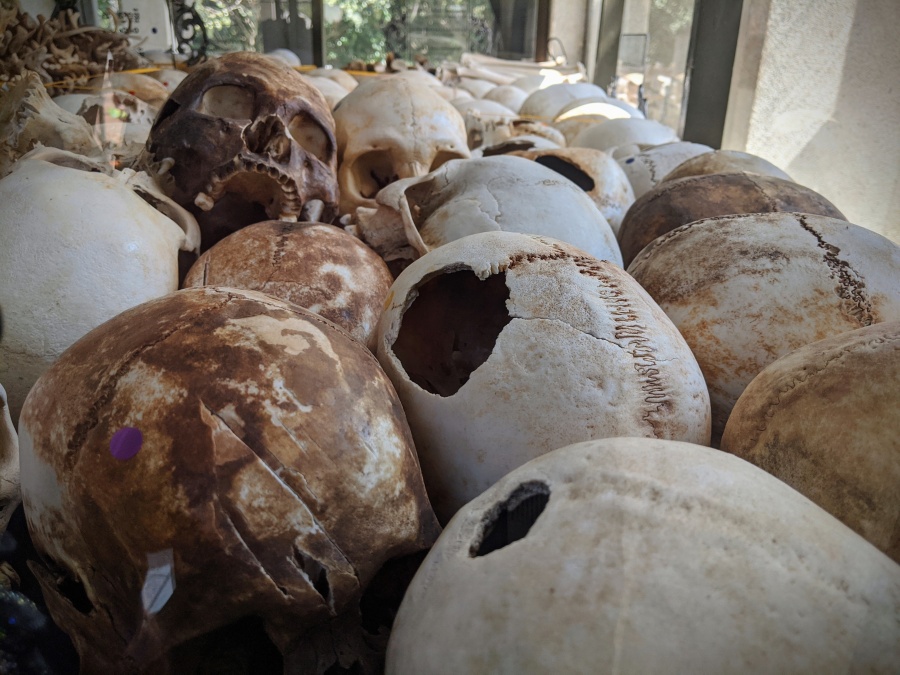
Two thoughts have kept coming back after the visit:
- We need to remember this genocide, and all others. History might not repeat itself, they say, but it does rhyme. Please let’s not rhyme with genocide. And yet, we have two going on right now: Darfur Genocide in Sudan, and the Rohingya Genocide in Myanmar.
- I am so incredibly thankful for being born in a place and time that I don’t have to go through this. Literally through no work of my own, I was born into a safe country at a time of peace and rapidly growing prosperity, and then made it to the richest and most powerful country in the world at a time of a global technological boom. I am amazingly fortunate, and if you’re reading this, you’re probably pretty fortunate, too.
Anyway - onto happier subjects.
One of the surprise highlights of my time in Phnom Penh was a chance visit to the SOSORO Museum of Money and Economy. I was walking by on my way to Wat Phnom, and noticed the museum. I’ve never seen a museum of “money and economy” before, and I figured I need to check this out. I am happy I did.
The museum opened just this year, and it is “designed to provide a unique perspective on Cambodia’s history and offers a sharper grasp on the constant interaction between money, the economy and politics.” As I learned Cambodia has a rich history with money and economics. The Khmer Empire, even at its massive zenith, never adopted currency, relying instead on barter; scholars argue that was one of the reasons for its downfall. Eventually currency was introduced and run reasonably well during the French Protectorate era (1867 to 1953). The Khmer Rouge abolished all currency again in the mid-1970s, which did not go well, obviously. Currency was then reintroduced in the early 1980s, but it was very unstable.
After the 1991 peace accords, there was a huge influx of foreign aid, and the US dollar became a de-facto second currency here because it was so much more stable. This continues to this day. The exchange rate has not changed much for many years now from around 4,000 riel per USD, and so the two currencies get used alongside each other at that rate. For example, a water might cost you $0.50 (and be listed as such), and if you pay with a one dollar bill, you’ll get back 2,000 KHR in change (they have only USD bills here - no coins).
The museum shows a history of Cambodia from an economic perspective, showing graphs of GDP growth, exchange rates, inflation and much more, alongside videos and photographs that show the life behind the numbers. In addition, there’s also an interactive part that discusses and demonstrates how economics works. For example, you might be asked “Oh no - the economy is slowing down! We need to stimulate it! What should we do?” One of the options is “lower interest rates”, and if you select it, a cartoon will show you the effect lowering interest rates has on the economy.
I found the museum really interesting, informative, and - I’ll admit it - downright fun.
Does anyone know any similar museums?
I would love to go to one that walked me through the economic history of the United States.
Miscellaneous
Hailing transportation is generally provided by tuk tuks and remorques, though frequently the word tuk tuk is used for both. Here’s a video, filmed from a remorque, where you can see a bunch of tuk tuks in traffic in Phnom Penh:
Both are similar to the Filipino tricycles - and serve the same purpose - but both are also vastly more pleasant and comfortable. I wonder why the two countries have such different solutions.
My remorque was involved in an accident that demonstrated just how inadequate the brakes are. A policeman abruptly stopped traffic in front of us, and a scooter in front of us stopped. Our remorque was unable to stop in time, and into the back of the scooter we went. Everyone was ok, thankfully, and after an angry exchange (much of which was directed at the cop for stopping traffic in a dangerous manner), everyone went on their way.
A popular evening entertainment and exercise in Phnom Penh is something akin to street sepak takraw - no net or competitiveness involved, just keeping the ball in the air:
I played along for a little bit, but I was wearing sandals, and the ball used for sepak takraw is made from rattan (“the thin pliable stems of a palm, used to make furniture”… basically thin sheets of wood), and it got pretty painful pretty quickly, so I stopped.
All in all, I had a lot of fun - thanks, Cambodia!
Comments